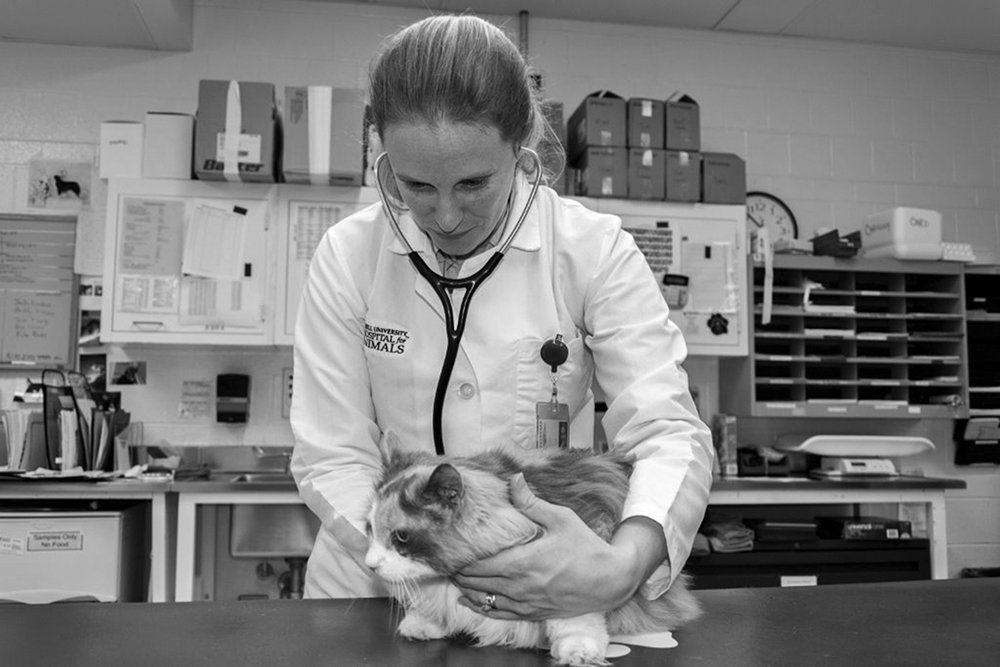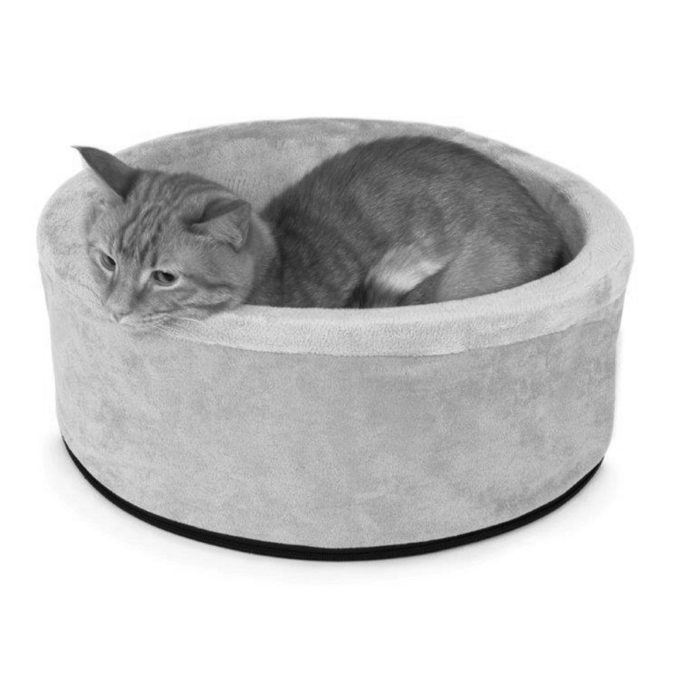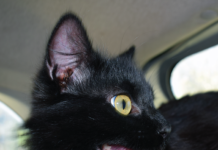As the cat population ages, with some living into their 20s, the number of cats diagnosed with arthritis is growing as well. Advances in veterinary medicine and better reporting may have contributed to what Banfield Pet Hospital’s 2015 State of Pet Health report found was a 31 percent increase in feline arthritis in the last five years.
Whatever the reason, this much is certain: early detection and owner management of their cat’s pain can provide a better life for cats with this incurable disease.
“More severe cases may involve multiple levels of pain management, from diet and exercise plans to medications, nutraceuticals and other alternative therapies,” says Liz Wilcox, DVM, at Cornell University College of Veterinary Medicine.
5 Essentials to Improve Daily Life
1. Exercise: When an arthritic cat is overweight, the additional strain on already compromised joints compounds the problem and the pain level. “Exercise in the form of play is excellent for improving joint range of motion and weight loss,” says Liz Wilcox, DVM at Cornell. “Techniques that allow cats to stretch and balance can also be very effective. A veterinary rehabilitation specialist can help develop a precise exercise plan to suit your cat’s needs.”

Cornell
2. Bedding: A variety of firm beds can relieve stress on their joints. And if one of those beds is heated, so much the better. “Senior cats are heat seekers,” Dr. Wilcox says. “They may be utilizing their own form of heat therapy!”
3. Litter boxes: Limited range of motion makes it difficult to use boxes. Dr. Wilcox’s advice: Use uncovered litter boxes with a lower entry cutout and homemade “backsplashes.” Some owners make them from plastic place mats and duct tape.
4. Ramps: “Cats appreciate being able to perch up high,” Dr. Wilcox says. “Ramps and the strategic placement of supportive objects of varying heights can allow arthritic cats to continue to climb to their preferred resting areas.”
5. Special diets and supplements: Many senior cats with arthritis have concurrent illnesses, such as kidney disease, that require carefully formulated diets. Certain weight-loss diets can aid in the management of more than one condition. Before making any dietary changes, be sure to consult your cat’s veterinarian.
Helping Mobility.
Owners may need to make changes in the home to accommodate cats with limited mobility. They may also choose to explore integrative treatments such as laser therapy and may need to adjust to changes in their cats’ personality as a result of pain. But their commitment — and in some cases veterinarians’ prescribing multiple pain medications — can make cats more comfortable. “It is difficult to quantify the level of pain cats are experiencing with arthritis,” says Dr. Wilcox, who studies the genetic bases of feline disease at the Cornell Veterinary Biobank, a repository of DNA and medical information. “However, if cats are displaying changes in behavior that may be attributable to arthritis, they are very likely to be experiencing significant pain.”

Thermo-Kitty Bed
An estimated 60 to 90 percent of cats develop arthritis. “The incidence increases with age, but a direct cause and effect relationship hasn’t been established,” Dr. Wilcox says. Cats with previous trauma or conditions such as hip dysplasia typically develop arthritis at a younger age. Although any breed of cat may develop the disease, arthritis that develops secondary to hip dysplasia is well documented in the Maine Coon.
Arthritis is a degenerative condition of any freely moving cartilage joint, including hips, elbows, knees, lower back, shoulders and ankles. “However, rarely will an arthritic cat show overt lameness,” Dr. Wilcox says. “The most important diagnostic tool is the owner’s ability to detect the subtle behavior changes that may indicate arthritis in their cats and then inform their cat’s veterinarian.” The signs include:
– Decreased mobility. Arthritic cats may jump less frequently or jump smaller distances with less ease.
– House soiling. Arthritic cats may be unable to posture normally in a conventional litter box and may miss the box or dismiss it entirely because of difficulty entering and exiting.
– Personality changes. A typically easy-going cat may become irritable, less interested in being petted and may exhibit increased or decreased vocalization.
– Reduced activity, playing less and/or sleeping more.
– Neglected grooming, leading to an unkempt appearance.
A thorough orthopedic examination can help determine the cause of the behavior changes and identify the affected limbs or joints, but it can sometimes prove difficult. “Cats are often nervous and tense during examinations and may disguise their pain levels,” Dr. Wilcox says. Fortunately, proper handling techniques specific to cats are becoming more widely recognized and practiced.
While X-rays are important in diagnosis, the images may not reflect the degree of pain a cat is experiencing, Dr. Wilcox says. “Cats showing mild degenerative joint changes on radiographs may experience significant pain and vice versa.”
Owners will need to devote time and financial commitment to treatments. They can include:
– Weight management. Overweight or obese cats will have additional strain on affected joints. “So a cat who has mild arthritis may improve substantially with weight loss alone,” Dr. Wilcox says. “However, overweight cats should lose only 1.5 percent or less of their body weight per week. Weight loss that occurs too rapidly can be detrimental to your cat’s health due to an abrupt change in metabolism.” One example: hepatic lipidosis (fatty liver).
– Physical therapy. Cats often exercise on their own terms but can be guided by veterinarians trained in physical therapy and rehabilitation techniques, Dr. Wilcox says. Often physical therapy treatments are recommended more frequently initially; the frequency and duration can later be adjusted according to the cat’s tolerance and response. Therapies offered at the Sports Medicine and Rehabilitation Service at Cornell and other universities and specialty clinics include massage, exercise using ramps and perches, and — for some special cats — underwater treadmills.
– Pain management. Non-steroidal anti-inflammatory drugs (NSAIDs), are often very effective in decreasing pain and inflammation associated with diseased joints in human and feline patients. However, the risk of side effects can be greater in cats, and NSAIDs should be administered under veterinary supervision, Dr. Wilcox says.

Michael P. Carroll
“Senior cats often have concurrent illnesses, such as chronic kidney disease, that may worsen with the use of NSAIDs. Therefore, laboratory testing prior to and during treatment as well as monitoring appetite and thirst are essential.” Cats taking NSAIDs may experience GI problems, mainly loss of appetite, vomiting and diarrhea.
Additional medications that may be prescribed include gabapentin, tramadol, buprenorphine, amitriptyline and amantadine. “These medications generally provide pain management that is inferior to non-steroidal anti-inflammatory drugs; however, they carry a much lower potential for serious side effects, ” Dr. Wilcox says.
In some cases, veterinarians may use lower doses of multiple medications in combination to help decrease side effects. “Each medication often works in a different way to combat pain,” Dr. Wilcox says, explaining that the combinations cause synergistic actions, helping each other to work better.
Injectable polysulfated glycosaminoglycan, derived from bovine tracheal cartilage, may improve arthritis symptoms but has not been FDA-approved for cats. It’s marketed as Adequan for dogs and horses, intended to stimulate cartilage repair. Veterinarians can prescribe it “off-label” for cats, meaning at their discretion. The supplement works best when used early in the course of arthritis, Dr. Wilcox says.
Human over-the-counter medications for pain are generally unsafe for cats. In fact, Dr. Wilcox points out that one regular Tylenol can be lethal to cats.
– Alternative treatments. “In general, alternative arthritis therapies are not as well-researched as nutrition, weight loss and NSAIDs,” says Dr. Wilcox. “However, acupuncture has been growing in popularity and has a body of evidence to support its use in management. Massage, heat, laser and ultrasound therapy can also be effective, but these techniques may require adaptation for cats.”
– Supplements. “Of the nutraceutical supplements studied, omega 3 fatty acids seem to have the most consistent positive effect,” says Dr. Wilcox. “Glucosamine also may provide mild positive benefits for a period of time.” And while herbal therapy is becoming more common, Dr. Wilcox cautions, “It is imperative to first consult with your cat’s veteriarian, as many herbs can be toxic to cats.”
The prognosis for arthritic cats varies with the severity of the disease and their response to therapies, Dr. Wilcox says. “The encouraging news is that this is a condition that owners can really help their cat’s veterinarians recognize and diagnose. Many of the interventions to mitigate pain can be accomplished at home, and treatments will often make cats feel young again and may help them regain their desire and ability to partake in some of their previous playful activities.”




